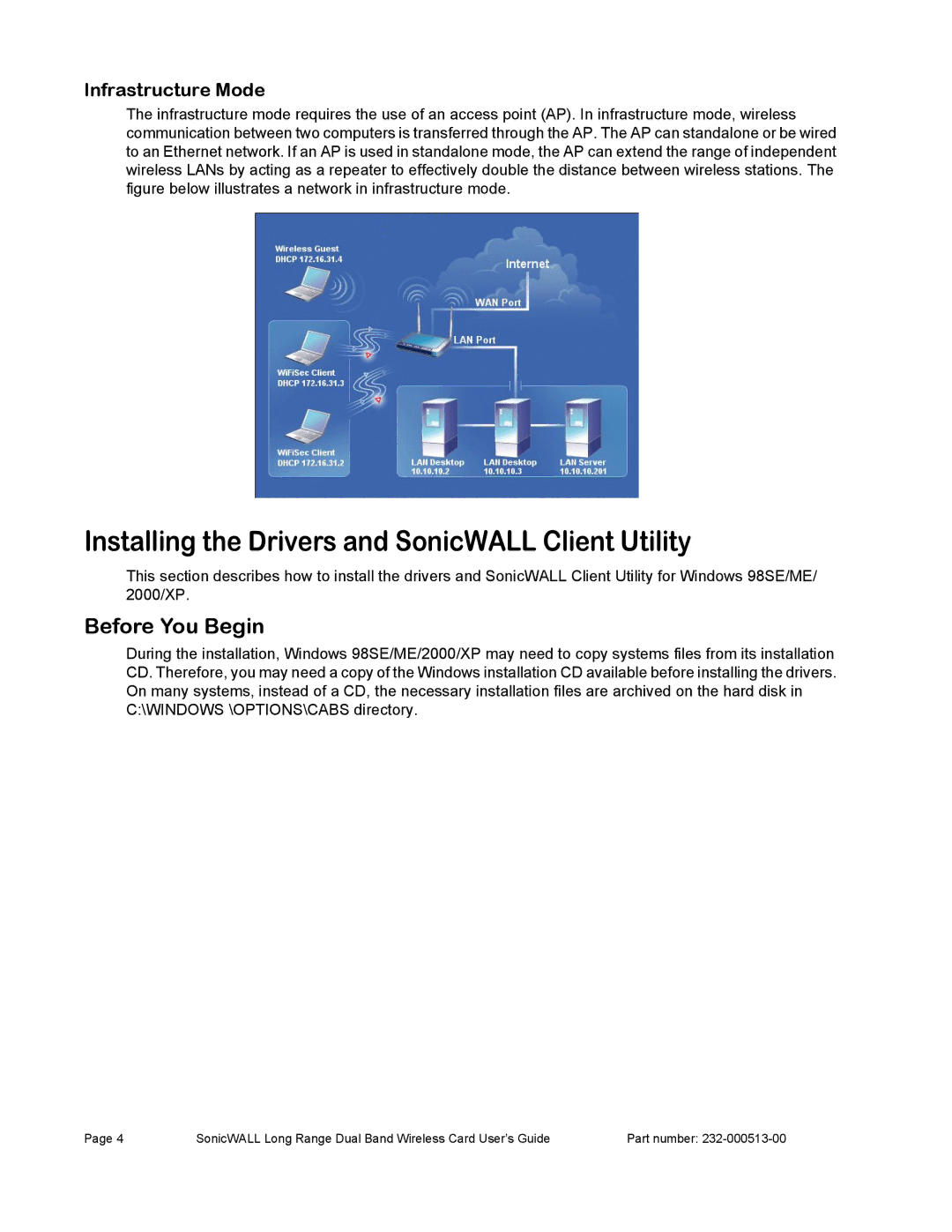Wireless Card specifications
SonicWALL, a leader in network security solutions, offers an extensive range of wireless cards designed to enhance the connectivity and security of networks. The SonicWALL Wireless Card stands out for its robust features, advanced technologies, and distinctive characteristics, making it an ideal choice for businesses seeking to improve their wireless capabilities.One of the primary features of the SonicWALL Wireless Card is its compatibility with SonicWALL firewalls, ensuring seamless integration into existing network infrastructures. This compatibility allows for enhanced security measures, enabling organizations to protect their sensitive data effectively while providing reliable wireless connectivity. The card supports various wireless standards, including 802.11n and 802.11ac, which ensure high-speed data transfer rates and comprehensive coverage, essential for modern wireless network demands.
Another notable characteristic of the SonicWALL Wireless Card is its dual-band functionality. This allows the card to operate on both the 2.4 GHz and 5 GHz frequency bands, minimizing interference and optimizing performance. Users can experience faster speeds and less congestion in crowded environments, making the card suitable for busy offices and public spaces.
SonicWALL has also prioritized security in the design of its wireless cards. The devices support robust encryption methods such as WPA2 and WPA3, which protect against unauthorized access and data breaches. Furthermore, the SonicWALL Wireless Card is designed to support advanced features like Wireless Intrusion Prevention Systems (WIPS), providing real-time monitoring and threat detection. This proactive approach allows organizations to maintain secure wireless networks and mitigate potential risks effectively.
The installation and management of the SonicWALL Wireless Card is straightforward, with user-friendly interfaces and configurations. Network administrators can easily monitor usage patterns, manage bandwidth, and implement policies to optimize performance based on the organization's specific needs.
In conclusion, the SonicWALL Wireless Card offers a comprehensive solution for businesses looking to enhance their wireless networking capabilities. With its advanced technologies, robust security features, and seamless integration with SonicWALL firewalls, the card is a reliable choice for ensuring secure and efficient wireless connectivity in an ever-evolving digital landscape.

